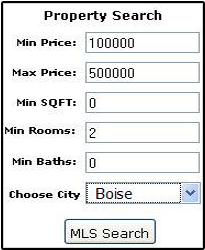Staging is all about impressing buyers and showing off the unique assets of a home. Research conducted by the National Association of Realtors® found that 82% of buyers’ agents said staging made it easier for a buyer to visualize living in the property; those numbers are no joke—effective staging speaks to buyers!
While homeowners are usually aware that they will need to stage their home, the process can feel overwhelming. After all, they are used to living in the property, it feels familiar, and cleaning a home can be time-consuming. Agents should expect clients to turn to them for advice when staging, and they need to be prepared to offer a proper plan.
Here is a simple guide to the basic principles of staging the perfect home.
- Define and Prioritize Rooms
Each room should have a purpose. Emphasizing that purpose helps buyers imagine what they can do with space and makes the property feel like a worthy investment. It’s a good idea to transform empty or unused rooms—converting basements into offices, game rooms, or secondary living rooms will be much more appealing than cluttered storage space.
Not all spaces are equal, and some simply don’t add as much value to a home. Experienced agents don’t need to be afraid of prioritizing some rooms and features over others. Living rooms, kitchens, master bedrooms, and dining rooms are usually given the most care when staging. - Organize and Declutter
Clutter is the bane of a properly staged home. It makes the space appear small and crowded, and it reminds the viewers that someone already lives there. Plus, it’s just not a nice sight!
It’s a good idea to have tabs on affordable storage services where homeowners can keep their boxed-up belongings. Agents should also be familiar with charities and drop-off donation sites for getting rid of canned foods, extra clothes, and other belongings that won’t be moving with the family. - Freshen Up
In addition to cleaning up rooms and clearing out space, it’s important to make the property feel fresh and welcoming. Stains or odors are unseemly, and they remind potential buyers that someone else has lived in the space.
Pay special attention to clearing out any trash cans inside or outside the property, and make sure the food processor is clear. A fresh scent is a subtle touch that improves the space—spice or vanilla-scented candles work wonders, or you can even bake cookies in the oven before a showing.
- Take Advantage of Natural Light
Nobody wants to walk through a dark and dreary house. Now is the time to clean the windows, draw open the curtains, and let the light in. Once you have all the natural light coming in, turn on the room’s lights (including closet lights) and see if any spots could use a little extra brightness so you can adjust lamp placements accordingly.
Make sure to regularly check for dead lightbulbs, dirty lampshades, and dusty surfaces. New light on top of a desk or tabletop can highlight scratches, stains, or gathering dirt that wasn’t visible before, so double-check that everything is spotless. - Depersonalize
Sometimes depersonalizing gets confused with decluttering. While decluttering does make a home feel less lived-in, there’s a lot more to properly depersonalizing a home.
It’s easy for homeowners to overlook wall art that feels natural and neutral because they are used to it—potential buyers may not have the same taste. Neutral, natural landscape paintings can be fine, but portraits, religious imagery, and anything that is highly stylized should be taken down. Likewise, children’s art, family photographs, and personal keepsakes are too personal to keep up while showing the home.
Aside from art, many items with daily uses should be put away as well. Keep closets stocked with only the most minimal amount of clothing, and bathroom counters shouldn’t hold more than washcloths and handsoap. If you need to fill in some space on countertops or tables, additions like houseplants, candles, and nondescript books are excellent neutral props.
Staging is all about finding and promoting the best features in a home. As no two properties are exactly alike the process will usually be slightly different from home to home, but these steps are broadly applicable in any circumstance. When you know how to cover the basics, you will be better prepared to apply your personal experience and focus on specifics when helping each client.
Highlighting the best features of a home requires a thorough understanding of market demands and buyer demographics—both of which are always changing. Boise Real Estate School offers the Continuing Education courses you need to stay up to date with the housing market and provide the best advice to your clients. Check out our full list of CE courses, covering everything from affordable housing solutions, first-time homebuyers, market analysis, and hottest topics in real estate!







